|
Subscribe / Renew |
|
|
Contact Us |
|
| ► Subscribe to our Free Weekly Newsletter | |
| home | Welcome, sign in or click here to subscribe. | login |
Construction
| |
January 8, 2003
2002 Projects of the Month defy the predictable
Special to the Journal
"In good design, there is almost always an element of surprise. But it doesn’t have to be a profound statement or a stagy performance to get a second look." So begins the AIA/DJC Project of the Month feature for last October, on the Kessel Building.
Now in its 12th year, the AIA/DJC Project of the Month gives local design projects a second look. These are mostly commercial, institutional and multi-family projects, well into the first year or two of use.
In selecting projects to feature, jurors and writers have sought out and found surprise -- a product of the imagination that goes beyond the predictable and the adequate. That discovery might take the form of playfulness, sensitivity, short and long-term economy, environmental responsibility or preservation. Sometimes the surprise is just a matter of doing the right thing, despite the immediate pressures to make a mark, win an award or just save a few dollars.
This kind of architecture requires collaboration between owner and designer, and a willingness to explore possibilities and take risks. The benefits of this type of collaboration move out from owners and investors to users, the community, the public and back to the owner.
The feature is jointly sponsored by the Seattle Chapter of the American Institute of Architects and the Seattle Daily Journal of Commerce, and represents a range of project types, excluding only single-family residential. Each project has been selected by an invited jury that includes two or more architects as well as representative of one or more of the following groups: developers, public and non-profit clients, academics and artists.
Juries meet twice a year to select six projects after perusing those submitted for the AIA Excellence Awards for Washington, along with ones submitted independently to the Project of the Month Program. To be eligible, they must be designed by registered architects and located within easy driving distance from Seattle.
January’s feature, the King County Library Service Center, was selected by developer Michael Trower and architects Jennie Sue Brown, Chris Carlson and Mel Streeter. The projects featured February through July were selected by developer Val Thomas with architects Peter Hockaday, Marilyn Brockman and Bill Fuller. King County Housing Authority director Stephen Norman sat with architects Jim Suehiro and Leslie Bain to select projects featured in August through December.
Feature writer and AIA/DJC Project of the Month co-founder Clair Enlow sat in with each jury, and AIA Seattle programs director Peter Sackett coordinated the selection process. With the exception of the January feature on the King County Library Service Center, which was written by Peter Sackett, all of the articles were authored by Enlow.
The features of 2002 reflect an interest in project types outside the range of typical architectural practice, and they seem to come in pairs. Two have religious themes. Two of them are part of transportation systems. There are two higher education projects and two libraries. Two more are civic buildings, and there is one office building and a restaurant.

Photo by Steve Dubinsky King County Library Service Center in Issaquah
|
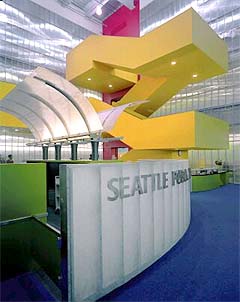
Photo by Fred Housel The Temporary Central Library for the city’s library system |
Storing books in a playful box. (February) The Temporary Central Library for the city’s library system, designed by LMN Architects, packs a lively, user-friendly facility into a small budget and a short life span. Seattle’s downtown library is in operation across from the Washington State Convention and Trade Center as it awaits the completion of its new home. With hot colors set against icy panels of polycarbonate plastic, the architect has given full play to the sculptural reception and vertical circulation elements in the atrium core. Stacks are efficiently arranged around service desks and wayfinding elements in large, raw spaces behind. When the library moves out this year, the site will house Seattle’s Museum of History and Industry.
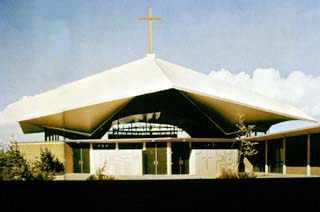
Mercer Island Presbyterian Church, designed by Paul Thiry |
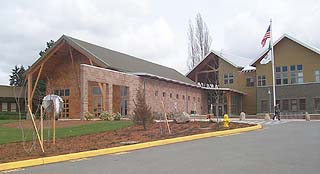
Photo by Clair Enlow Woodinville City Hall |
Making a center for an edge city. (April) Woodinville's new City Hall embraces an open park, creating a nontraditional civic space. The open structure, soaring ceilings and a jogging circulation spine designed by Lewis Architecture + Interior Design make for exciting interior streetscapes and indoor-outdoor views. The new building, which includes council chambers and houses the city administration, will be on a through way once current street plans are complete. For now, it serves as an example for development to come.
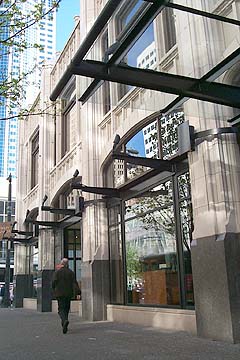
Photo by Sam Bennett Wild Ginger now fills the first floor of the historic Mann Building.
|
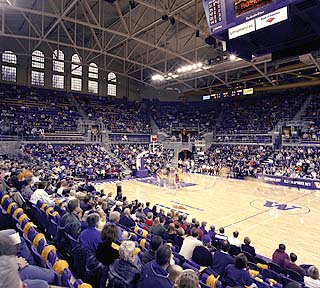
Photo by Jay Dotson UW's Hec Ed Pavilion |
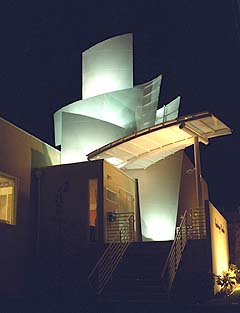
Photo by Ross Ishikawa Embassy Center Apostolic Church, Bremerton
|
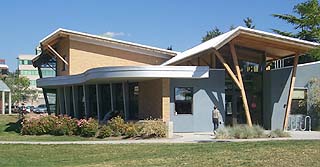
Photo by Clair Enlow The Kirkland Teen Union Building |
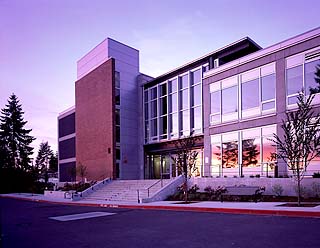
Photo by Ed LaCasse/LaCasse Photography Bellevue Community College New Instructional Building |
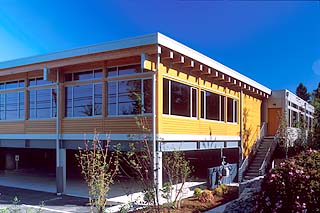
Photo by Pro Image Photo Kessel Building |
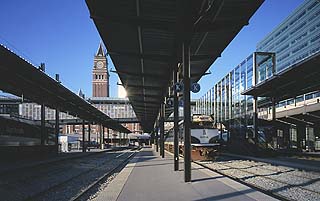
Photo by Art Grice King Street Station |
Putting commuters on a clear path. (November)The future of transportation in Seattle is clearly visible along the Sounder tracks that run beside the Amtrak stop at King Street Station. Serving the needs of commuter rail passengers, glass and steel structures provide shelter from Seattle rain as well as views in and around the station and its urban environment. The King Street Station platforms, stairways and canopies for Sound Transit Commuter Rail and Amtrak, along with platform amenities, were designed by Otak in association with DKA.
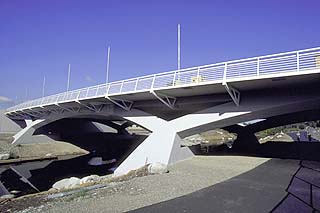
Photo by Vince Streano The Northeast 90th Street Bridge in Redmond |
From bridge to gateway. (December)The Northeast 90th Street Bridge in Redmond reinstates the natural scenery of the river at the same time it expands the urban environment. Collaborating with engineers at Entranco and landscape architects at Brumbaugh & Associates, LMN Architects has redefined the graceful bridge for the city of the millennium.
Clair Enlow can be reached by e-mail at clair@clairenlow.com.
Previous columns:
- LMN's Redmond bridge turns mundane into magical, 12-04-2002
- Transparent design helps keep commuters moving, 11-06-2002
- Breaking out of the box, Northwest style, 10-02-2002
- At BCC, a study in sustainable design, 09-04-2002
- A retreat for teens ends decade-long run-around, 08-07-2002
- A once lackluster hall now scans the heavens, 07-03-2002
- Design team got a workout at Hec Ed, 06-05-2002
- A terra cotta shell for intimate dining, 05-01-2002


